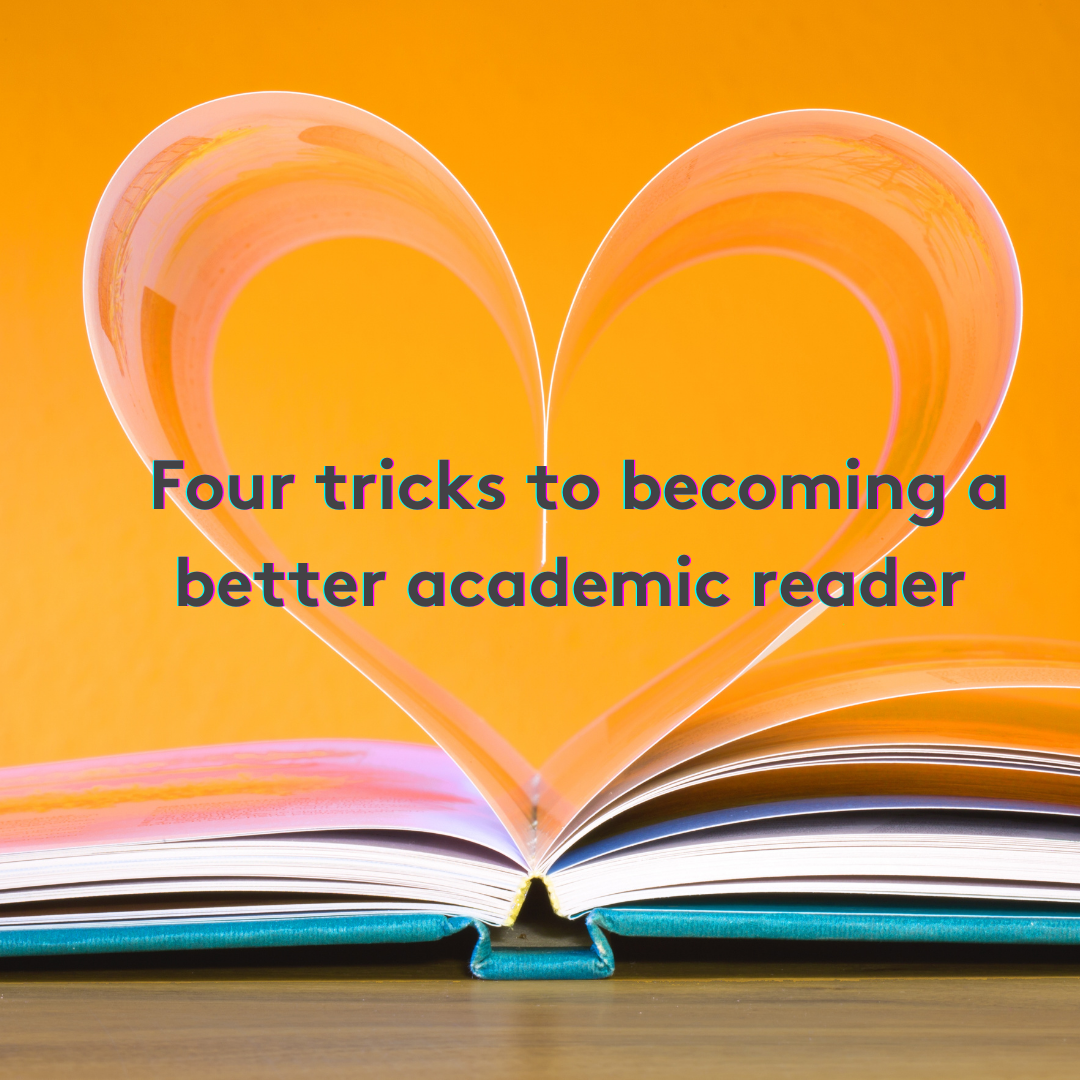 College professors often assign their students hundreds of pages of difficult academic reading per week. These reading-intensive assignments reflect a faulty assumption on the part of those professors: that college students arrive on campus already knowing how to make sense of dense texts and process information in huge quantities. Freshman writing classes at universities across the US demonstrate a tacit acknowledgement that when students first come to college they still need to meaningfully develop advanced writing skills. Why is this not also the case for reading? Why are “critical” or “analytical” reading practices so rarely taught in college classrooms? Given this glaring absence, here are four tricks that can help students tackle high-level reading assignments.
College professors often assign their students hundreds of pages of difficult academic reading per week. These reading-intensive assignments reflect a faulty assumption on the part of those professors: that college students arrive on campus already knowing how to make sense of dense texts and process information in huge quantities. Freshman writing classes at universities across the US demonstrate a tacit acknowledgement that when students first come to college they still need to meaningfully develop advanced writing skills. Why is this not also the case for reading? Why are “critical” or “analytical” reading practices so rarely taught in college classrooms? Given this glaring absence, here are four tricks that can help students tackle high-level reading assignments.
Trick 1: Contextualize
Read online encyclopedias, book reviews, or secondary literature that help contextualize the author and their piece of writing. And always read the introduction! When and where is this person writing? What is the social and intellectual climate like? What kind of textual conversation are they participating in? Who is their intended audience? Having this sort of easily accessible background information on hand will make the reading much easier and more sensible from the outset. When we pick up a new text knowing nothing about it, we waste so much time figuring out the basic context, because very few ideas make sense without it. In fact, we risk fundamentally misunderstanding the author’s argument or making faulty assumptions when we don’t understand things like cultural and intellectual context. So, dedicate a little extra time at the beginning to background research, and save yourself a lot of time and confusion during the reading process itself.
Trick 2: Annotate
There are two primary problems that annotating texts addresses. First, we tend to forget far more than we remember. Within a few hours of putting down a text, we begin to lose details that we were confident we would remember. Second, when tasked with reading hundreds of pages, it becomes very easy to lose track of the author’s main argument. This is why we annotate: highlight or underline important passages and write notes in the margins. By annotating a text, we make it much easier to circle back and recollect information and ideas without re-reading the whole text. Likewise, annotating keeps us engaged as we read, and constructs threads for us to follow in real time. There is, however, no single, catch-all annotation method. You will need to adopt or develop an annotation system that works for you. Many people use different colored pens or highlighters or symbols to mark different kinds of information. Experiment until you find a system that works for you!
Trick 3: Skim & Scan
Professors rarely expect their students to slowly and carefully read every single passage in an entire book. Rather, the assumption is that students will practice “skimming” and “scanning.” Whereas skimming is reading rapidly in order to get a general overview of the material, scanning is reading rapidly in order to find specific facts. Before you begin reading, think about why you are being assigned this text and what you are expected to get out of it. With this information in tow, you can read purposefully to find the elements of the text – whether those are arguments or facts – that will be most helpful for you. Reading like this might feel odd or difficult at first, but the more you practice reading purposefully, the easier and faster it will become.
Trick 4: Summarize
All three of the practices discussed so far are geared toward identifying what is most important in the text relative to the goals of the assignment. Even with context, annotations, and more purposeful reading, however, the key information in the text might still feel difficult to make sense of as a whole. This is why we summarize: give a brief statement of the main points of the text. This might be one or two full-length paragraphs or a bullet point list of sentences. Regardless of the format, the goal is to extract and reconstruct the author’s argument in straightforward terms. While summarizing might seem like extra labor, it will make it much easier for you to understand what the author’s argument is and how that argument unfolded. Just as important, summaries provide great talking points for class discussions and ready-made writing that you can use in your papers when discussing your assigned texts!
Cambridge Coaching was founded by doctoral candidates in English, and instruction in reading and writing is one of our particular strengths. Our tutors are published authors, as well as Ph.D candidates from the top English graduate programs in America, with most hailing from Harvard or the prestigious Iowa Writers’ Workshop--or both.
We have a long history of helping high school, college, and graduate students become more astute critical readers and writers capable of producing their own polished academic essays. Many of our students come to us looking for help with basic composition or reading comprehension, but our expert tutors have coached our clients through everything from business English to doctoral dissertations. Whether you need to learn how to tell a participle from a pronoun, or need help making sense of Shakespeare, we can design a syllabus to suit your specific goal.

Comments